The miles & points world has all kinds of different enthusiasts — some people are only interested in miles & points in order to save money on travel, while others are interested in miles & points because they love airplanes. I know there are plenty of people who are very frequent flyers but can barely tell the difference between an Airbus A380 and Boeing 747.
In this post, I’d like to share how I easily identify planes in a split second. Of course there are lots of methods for doing this, but I’ll share my techniques (and maybe other hardcore avgeeks can chime in with their methods in the comments section).
To keep things simple, I’ll just stick to the most popular mainline, commercial aircraft, and I’ll be talking about each “family” of aircraft in a particular section. Let’s start with Boeing aircraft, and then we’ll cover Airbus aircraft.
In this post:
Boeing 737 characteristics (narrow body)
The Boeing 737 is the most common commercial aircraft in service. To me, there are a couple most obvious signs that a plane is a 737, as opposed to an A220 or A320.
One method is to look at the cockpit windows. The 737 has six cockpit windows (which is standard), and the window at the far end on each side “slopes up” at the bottom, so the window doesn’t go as far down as on other jets. Furthermore, when you look at the tail of the 737, you’ll see that it connects with the rest of the plane with an extended slope, much more so than on the A220 or A320 (below you can see a 737 in the front and an A321 in the back).
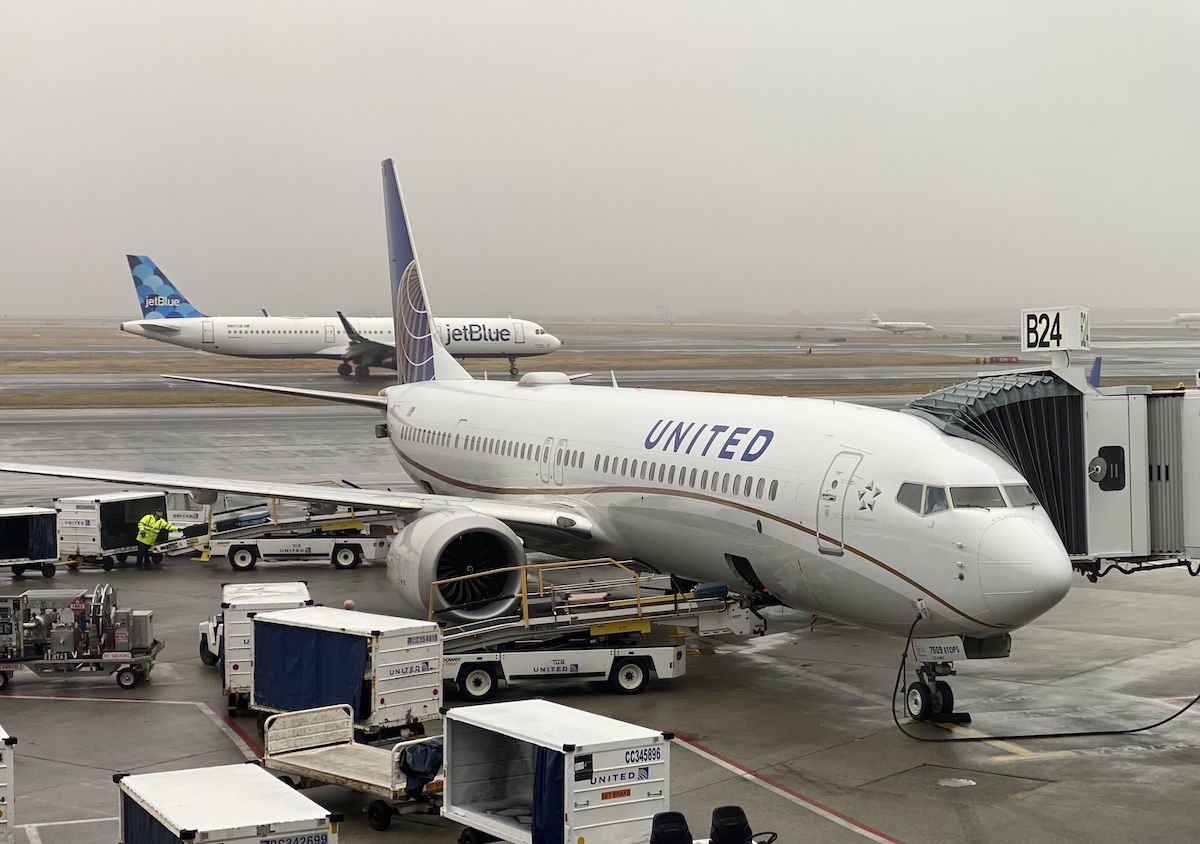
What can make identifying the 737 challenging is that there are so many different variants. Let’s differentiate between the 737 NG (the older version of the jet), and the 737 MAX (the newer and more controversial version of the jet).
There are three most obvious ways to tell if you’re traveling on a 737 MAX. The 737 MAX has the zig-zag pattern at the back of the engines, which I’ll talk more about below, as you’ll also find this on 787s and 747-8s.
Furthermore, the 737 MAX has the split winglet, which is large going both up and down, and the edges remain flat and straight. While some 737 NGs have split scimitar winglets, the upper and lower edges of the winglet are sloped.
Lastly, the 737 MAX has perfectly round engines, while the 737 NG engines flatten out a bit at the bottom, or look more oval.
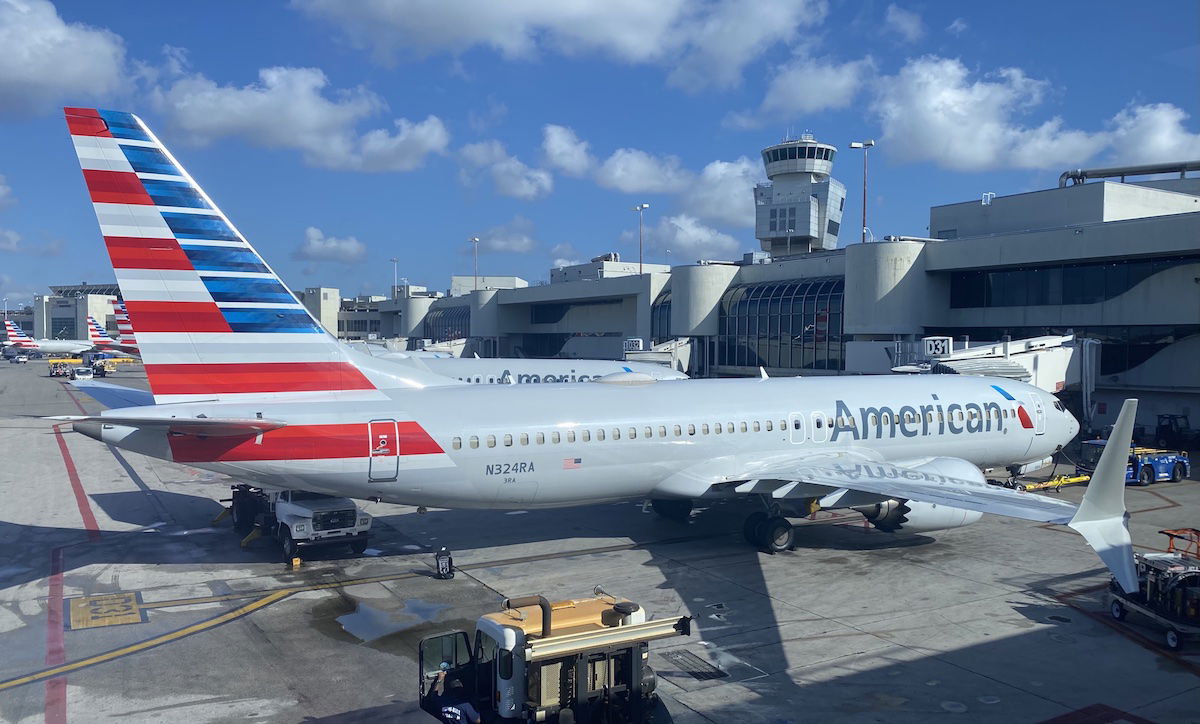
How can you tell the difference between the variants? In terms of fuselage design, there’s the 737-700, 737-800/737 MAX 8, and 737-900/737 MAX 9. The 737-700 is the smallest variant, and the easiest way to identify it is based on the single exit on each side over the wing.
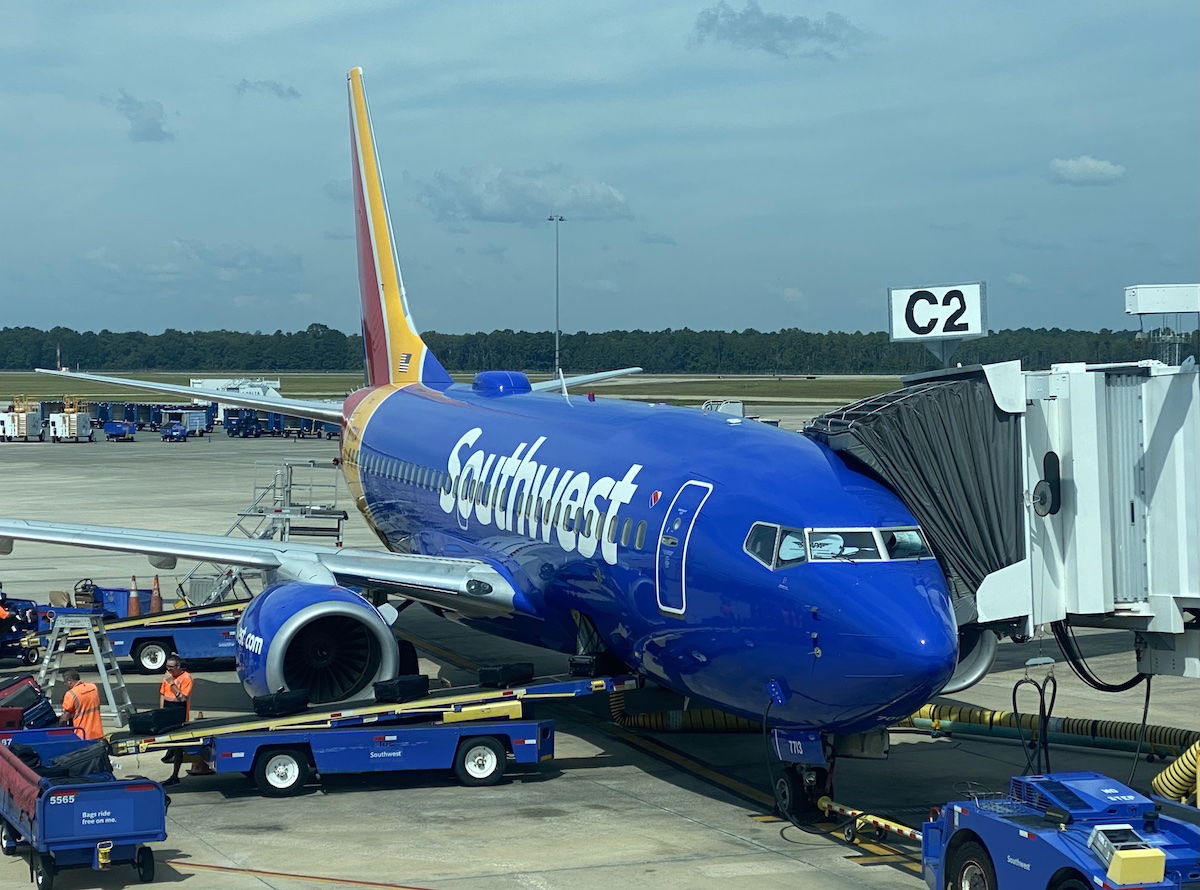
The 737-800 and 737 MAX 8 have two exits over the wing on each side, in addition to the exits at the front and back of the aircraft. The only exception would be the 737 MAX 8200, which is operated by some ultra low cost carriers, where there’s an extra exit in the back, with nine windows behind it.
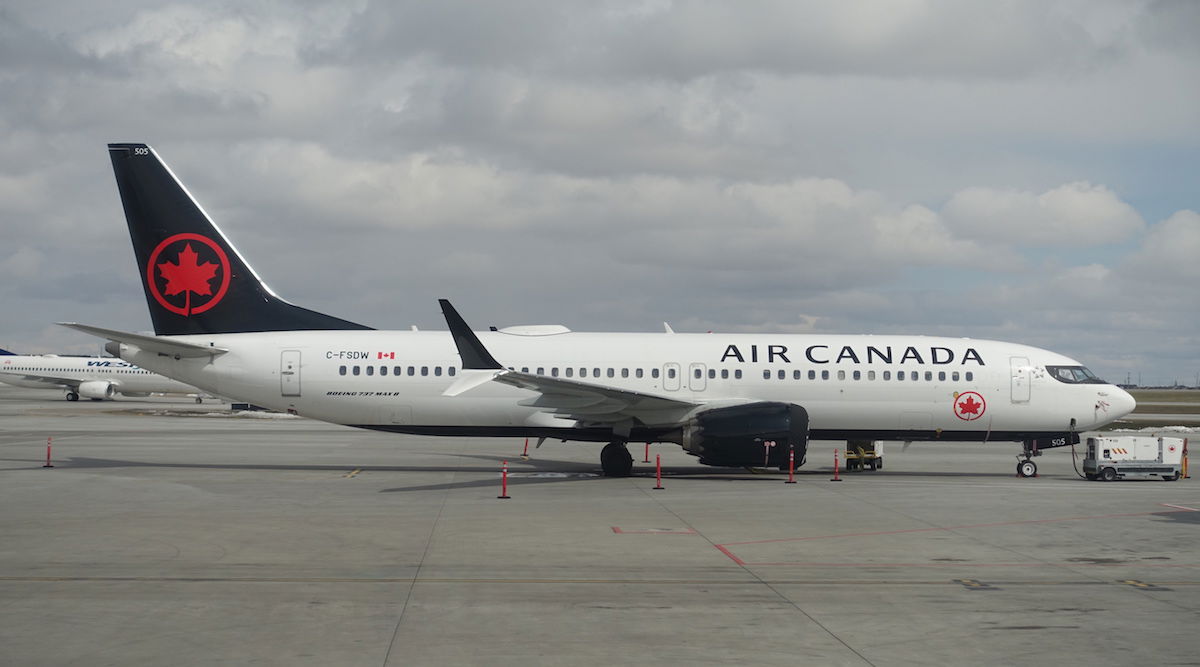
Then the 737-900 and 737 MAX 9 have two exits over the wing, plus they have an additional door plug (as opposed to an actual exit) between the wing and rear exit, which is why the window spacing is a little weird in the back.
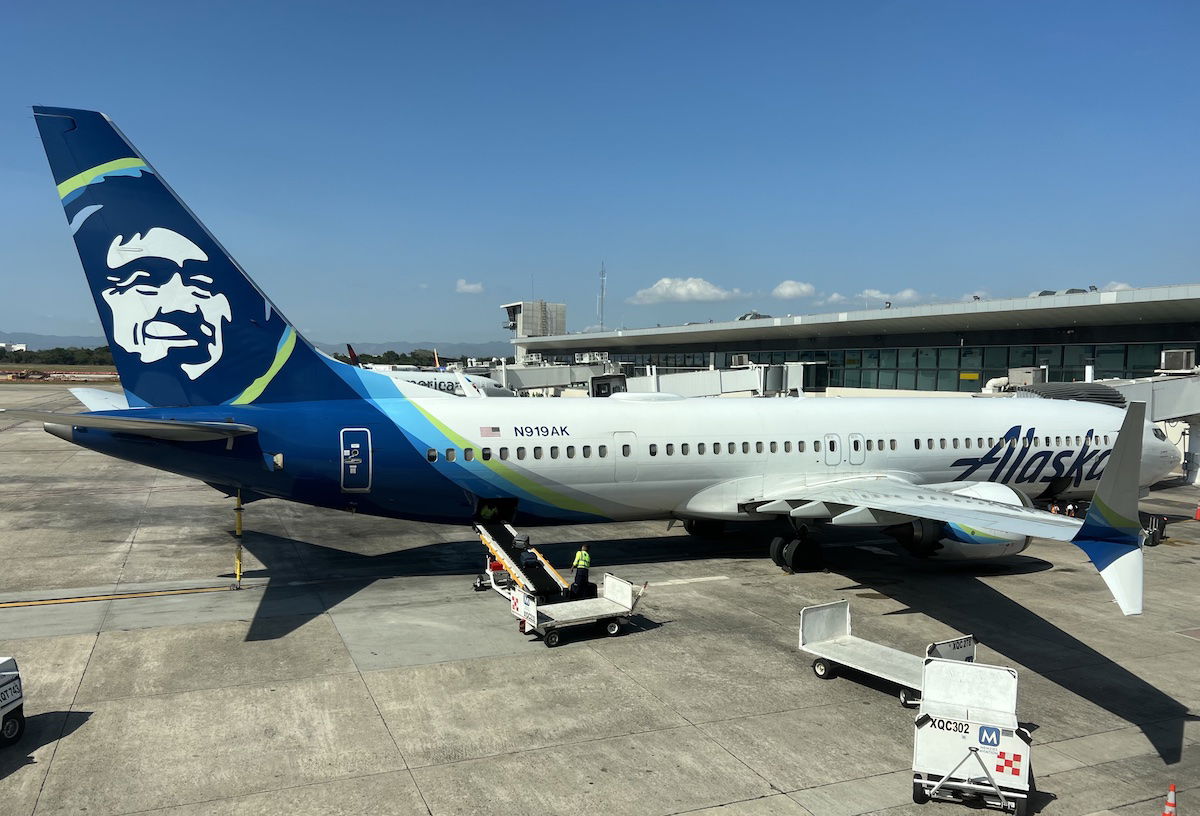
Boeing 747 characteristics (wide body)
As far as I’m concerned, the Boeing 747 will always be the queen of the skies. While the Airbus A380 has overtaken it in terms of size and passenger comfort, it can’t compete with the 747’s curves. The 747 has a full lower deck and then a partial upper deck, making it easy to identify.
While the passenger version of the 747 is becoming increasingly rare nowadays, there are two types that are most common — the 747-400 and the 747-8 (and no, it’s not the 747-800).
How can you tell the difference between the two planes? For one, the 747-400 has traditional winglets that stick “up.” On top of that, the 747-400 has a smaller upper deck. Behind the upper deck exit row, there are only seven windows on each side.

As a point of comparison, the 747-8’s wingtips gradually go up, and the upper deck is bigger, with 15 windows on each side behind the upper deck exit row.
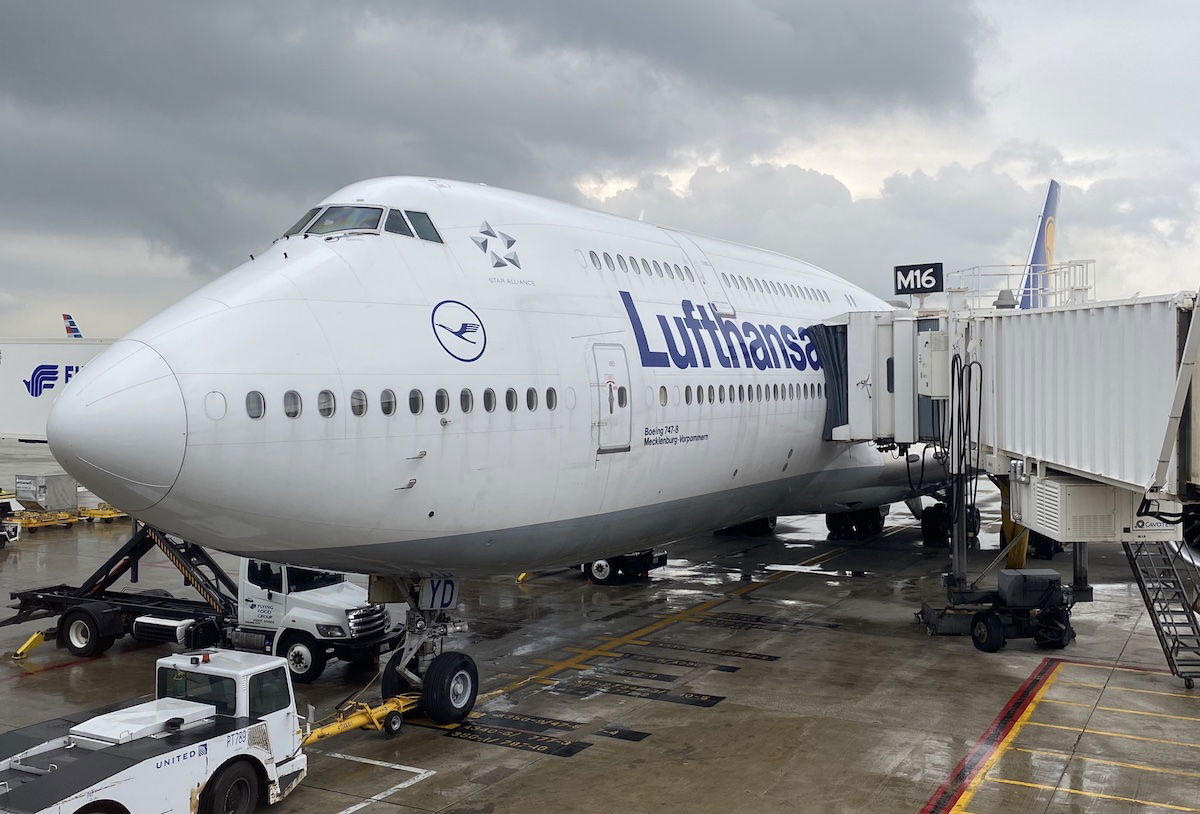
The rear of the 747-8’s engines are also similar to those of the 787, with a zig-zag pattern, as I’ll explain below.
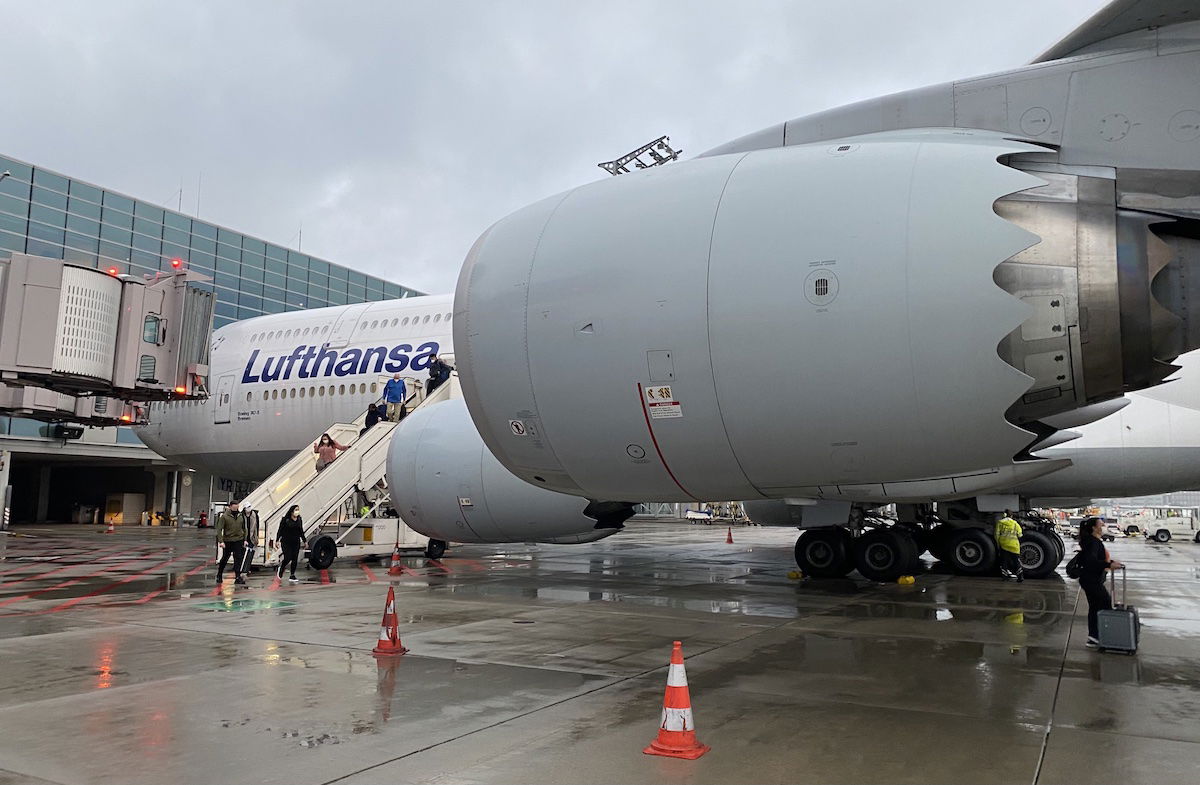
Boeing 767 characteristics (wide body)
From a distance, it’s not unreasonable to think that a 767 and 777 look alike. I even sometimes make that mistake. It’s especially tricky since there’s the 767-300 and 767-400, and they’re roughly proportional to the 777-200 and 777-300 in terms of their dimensions.
What makes identifying the 767 especially tough is that many airlines have “modified” them. Some airlines have winglets on the 767, while others don’t. Some airlines have two doors on each side of the 767-300, while others have three doors.
So let me make this simple — at the base of each wing, the 767 has two sets of two wheels. In other words, on each side there are four wheels, for a total of 10 wheels on the plane (including the two nose wheels). Meanwhile the 777 has three sets of two wheels at the base of each wing, for a total of six wheels on each side. I know this might sound minor, but I’ve actually found it to be a very easy way to tell the planes apart.
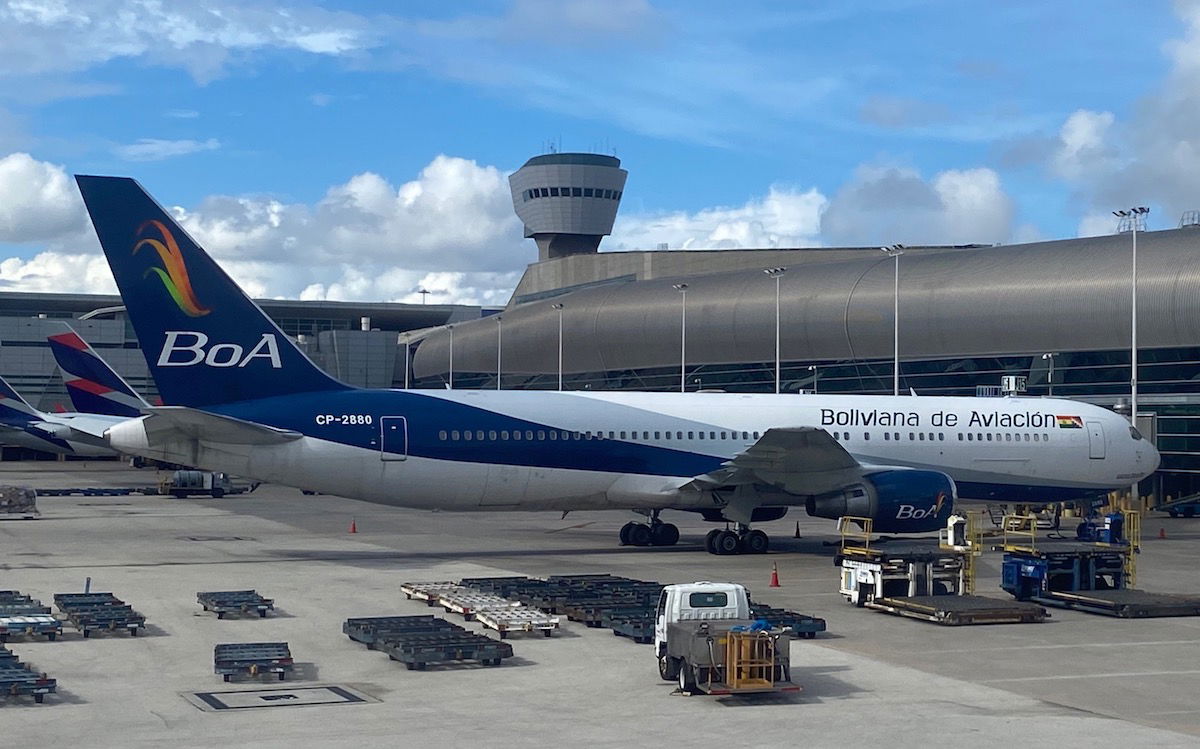
How can you tell the difference between the 767-300 and 767-400? The 767-300 has at most three sets of doors on each side (and sometimes just two), while the 767-400 has four sets of doors on each side.
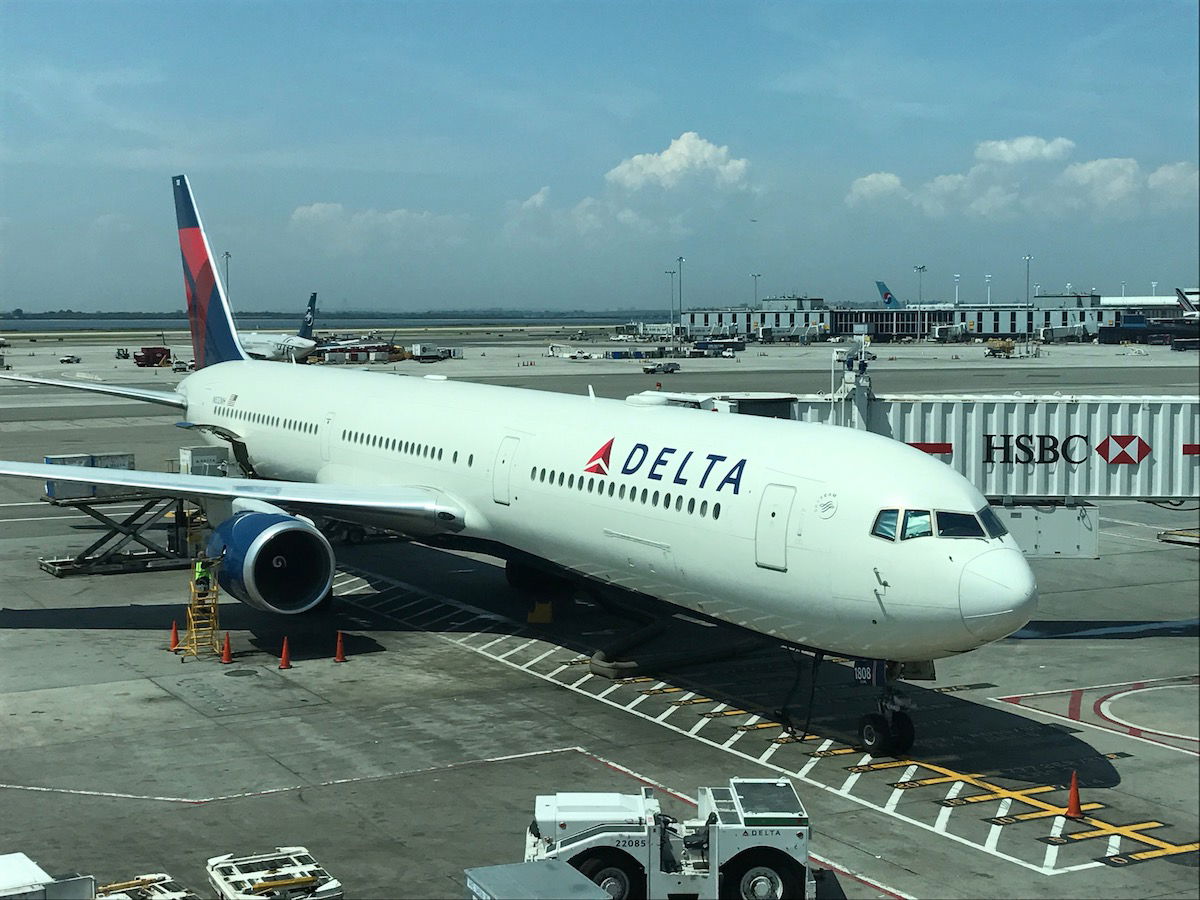
Boeing 777 characteristics (wide body)
For me there are four identifying characteristics of the 777 — two huge engines, no winglets, a total of 14 wheels (two in the front, and six in the back on each side, with three rows of wheels there), and a vertically flat and boxy tail cone below the tail (as opposed to a rounded one on most other jets).
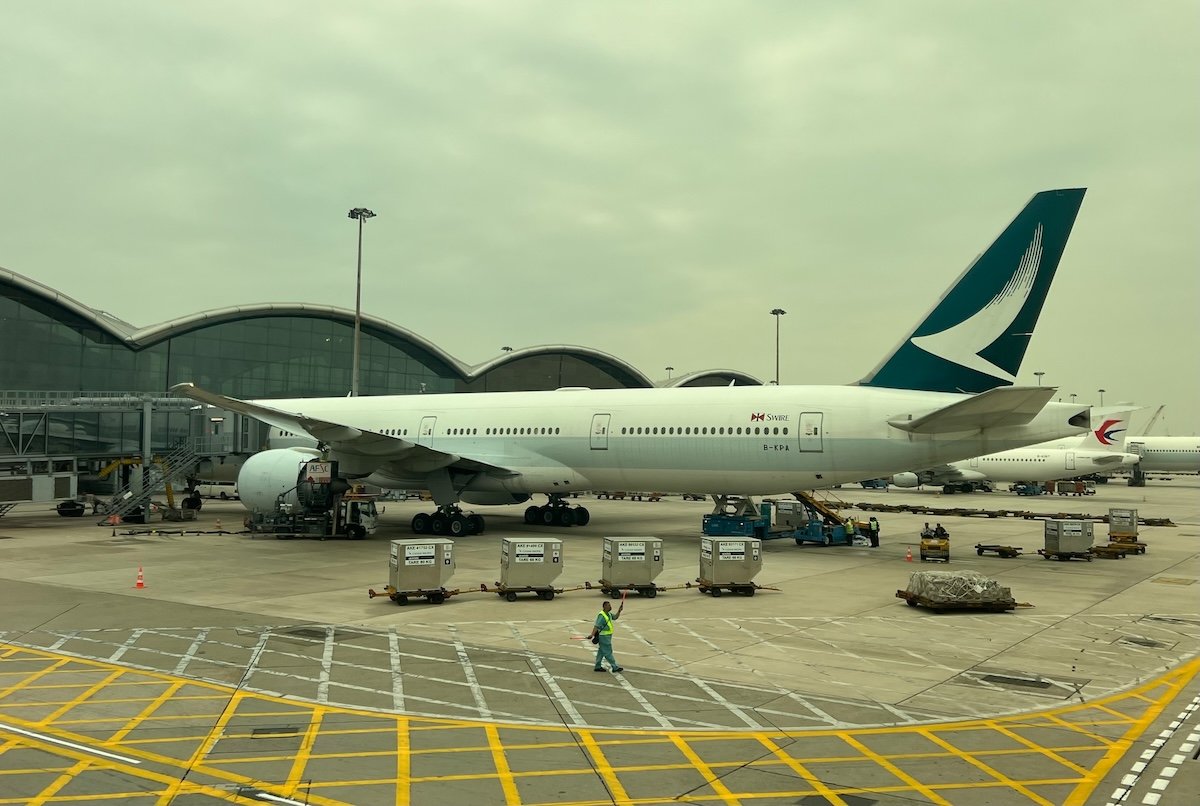
But how do you tell the difference between a Boeing 777-200 and a Boeing 777-300?
A Boeing 777-200 has just four doors on each side of the aircraft (one in the very front, one in front of the wing, one behind the wing, and one in the very back).
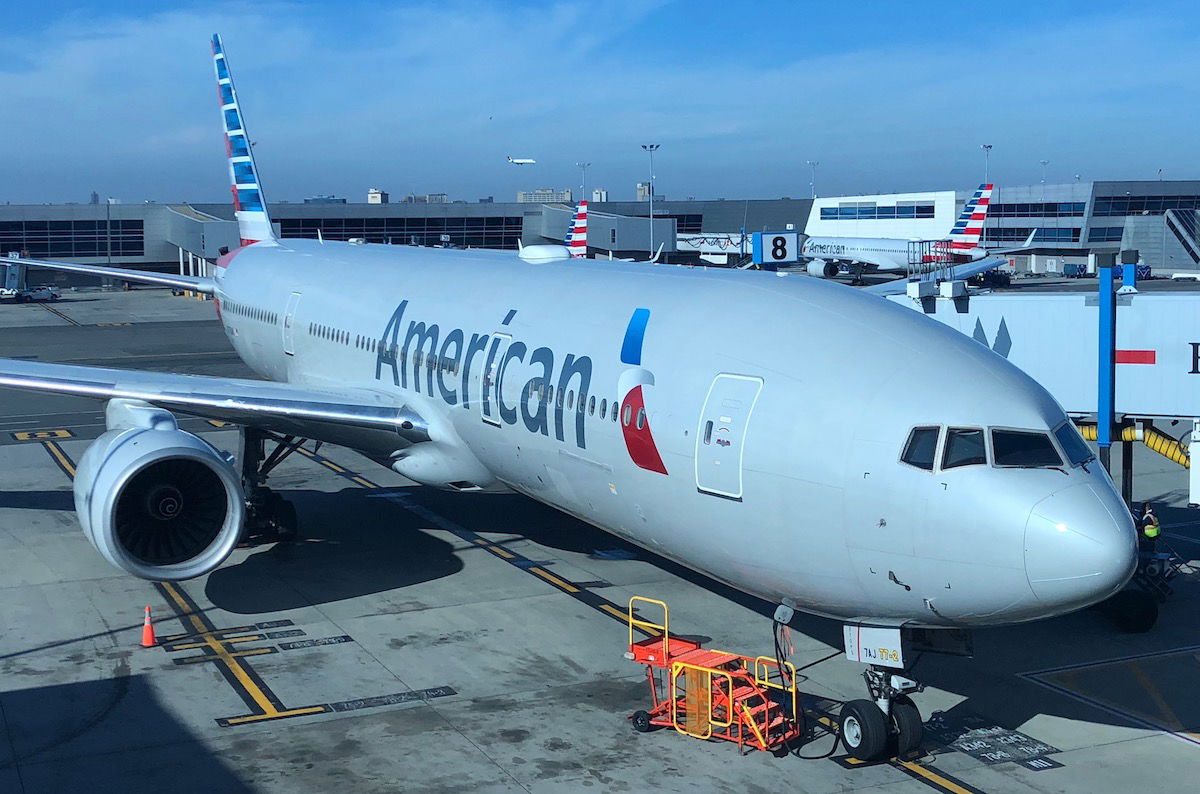
Meanwhile the 777-300 has five doors on each side of the aircraft (one in the very front, one in front of the wing, one immediately above the wing, one behind the wing, and one in the very back).

Boeing 787 characteristics (wide body)
The easiest way to identify the 787 is by the zig-zag “cut outs” in the back of the engine, known as chevrons (designed for noise reduction). Also, the wings have a unique shape. While there aren’t abrupt winglets, the wings “stretch” pretty high up.
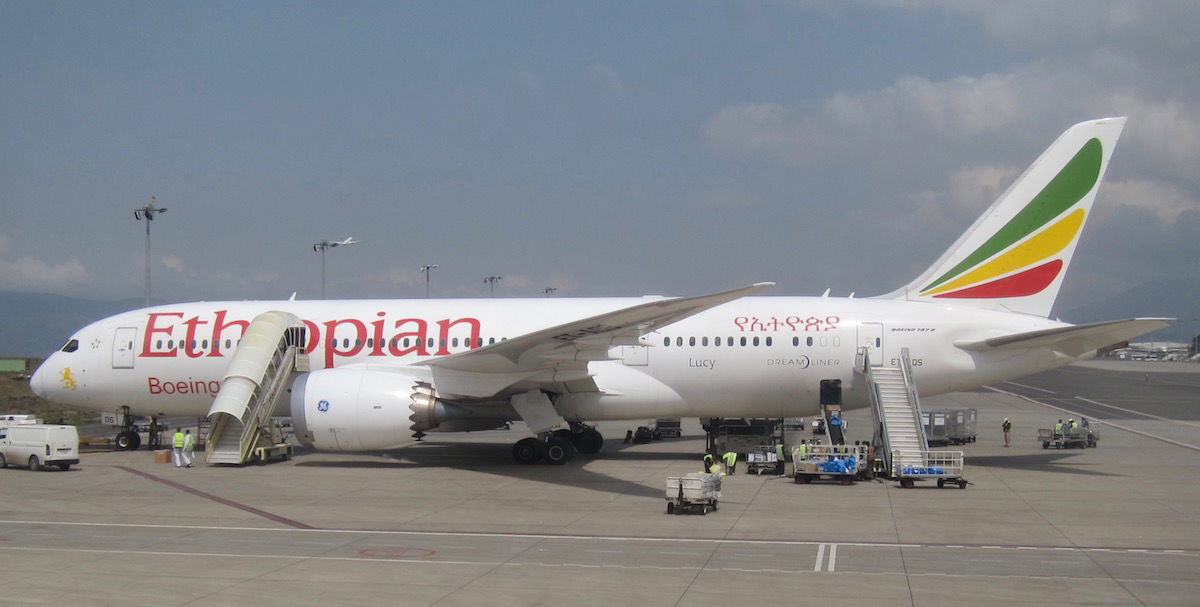
If you’re staring right at the front of the plane, there’s another easy identifier. The 787 is the only wide body jet to have four cockpit windows, rather than six.
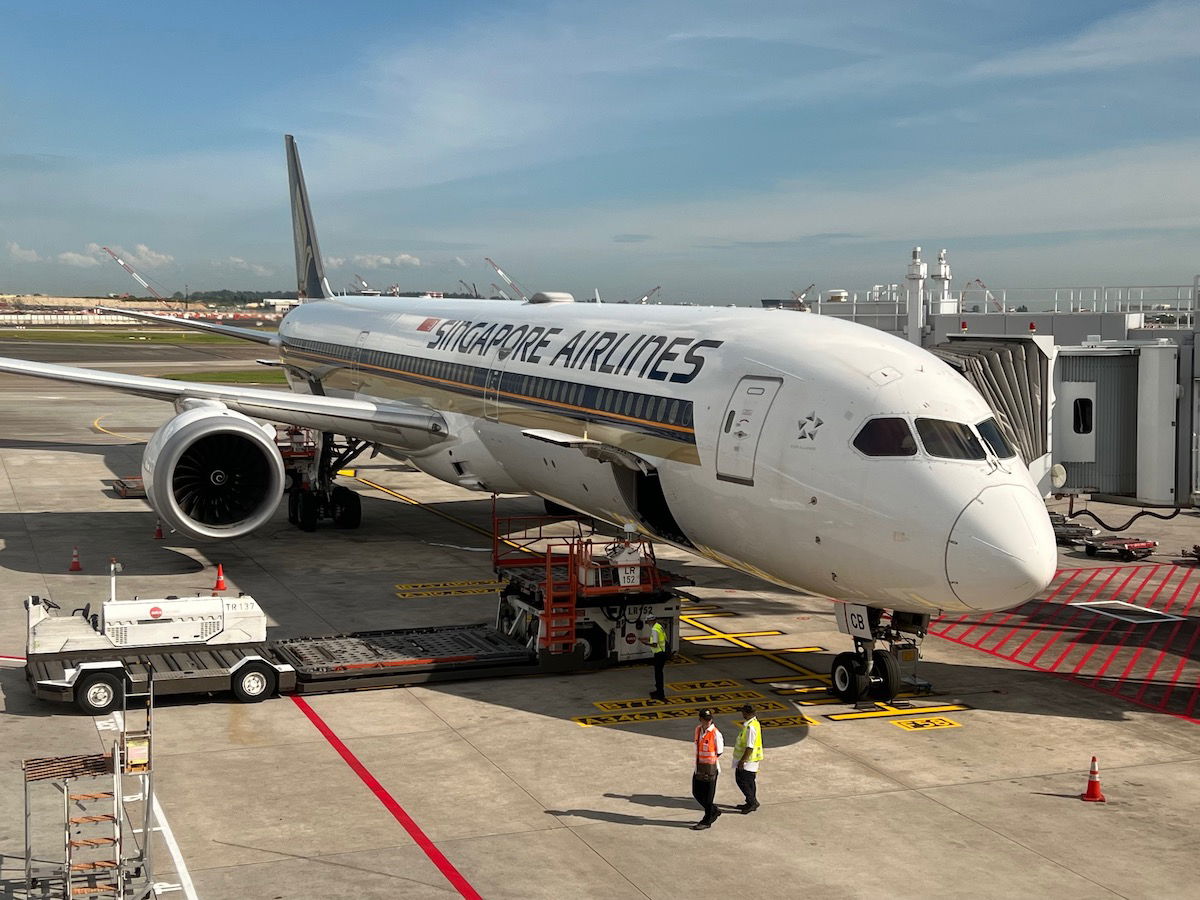
How do you tell the difference between the 787-8, 787-9, and 787-10? Personally I can eyeball it pretty easily, but it can be tough for some people to do, since all versions of the plane have four exits on each side, similar wings, the same number of wheels, etc.
The only real difference between the planes is the length — the 787-8 is 186 feet long, the 787-9 is 206 feet long, and the 787-10 is 224 feet long. That’s a pretty significant difference, as the longest version is over 20% longer than the shortest version.
I think a 787-8 is pretty easy to spot, because it looks quite small from the outside. Usually I look at the number of windows between the first and second set of doors. If there are 10 or fewer windows on each side (including ones that are “blacked out”), it’s a 787-8.
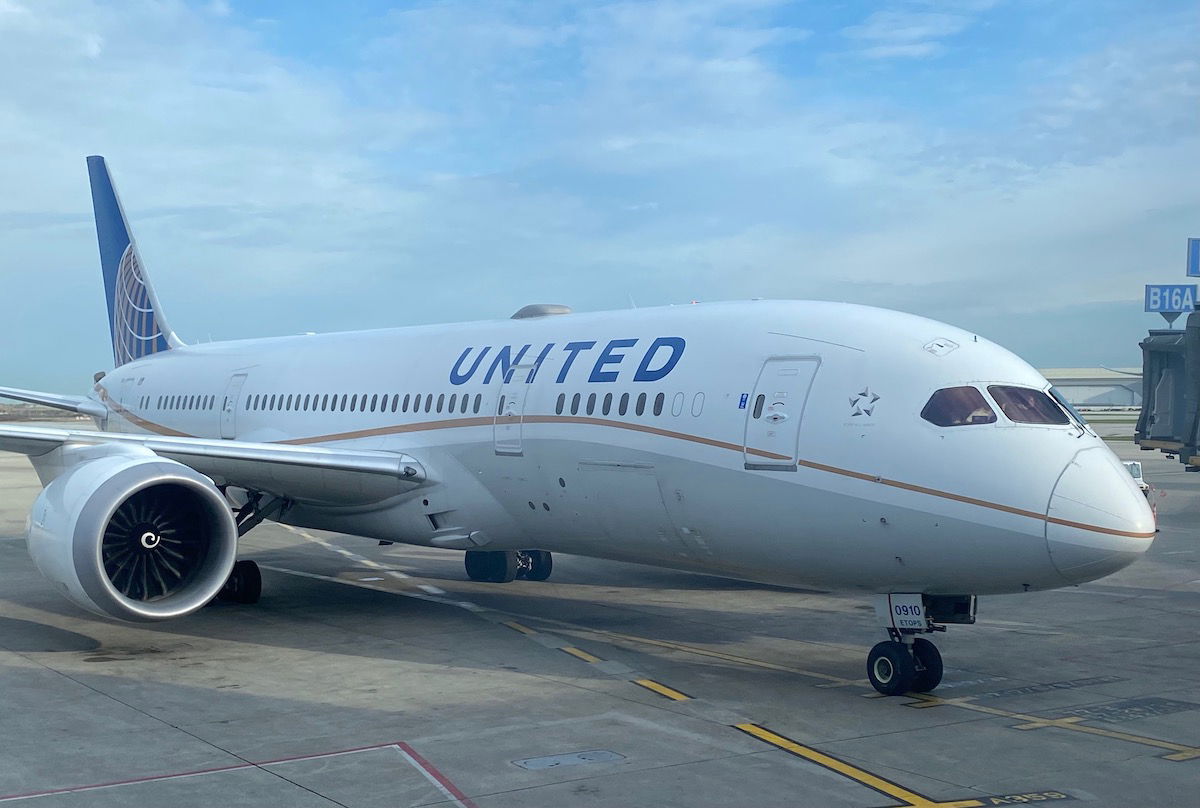
Meanwhile if there are more than 10 but fewer than 15 windows on each side between the first and second set of doors, it’s the 787-9.
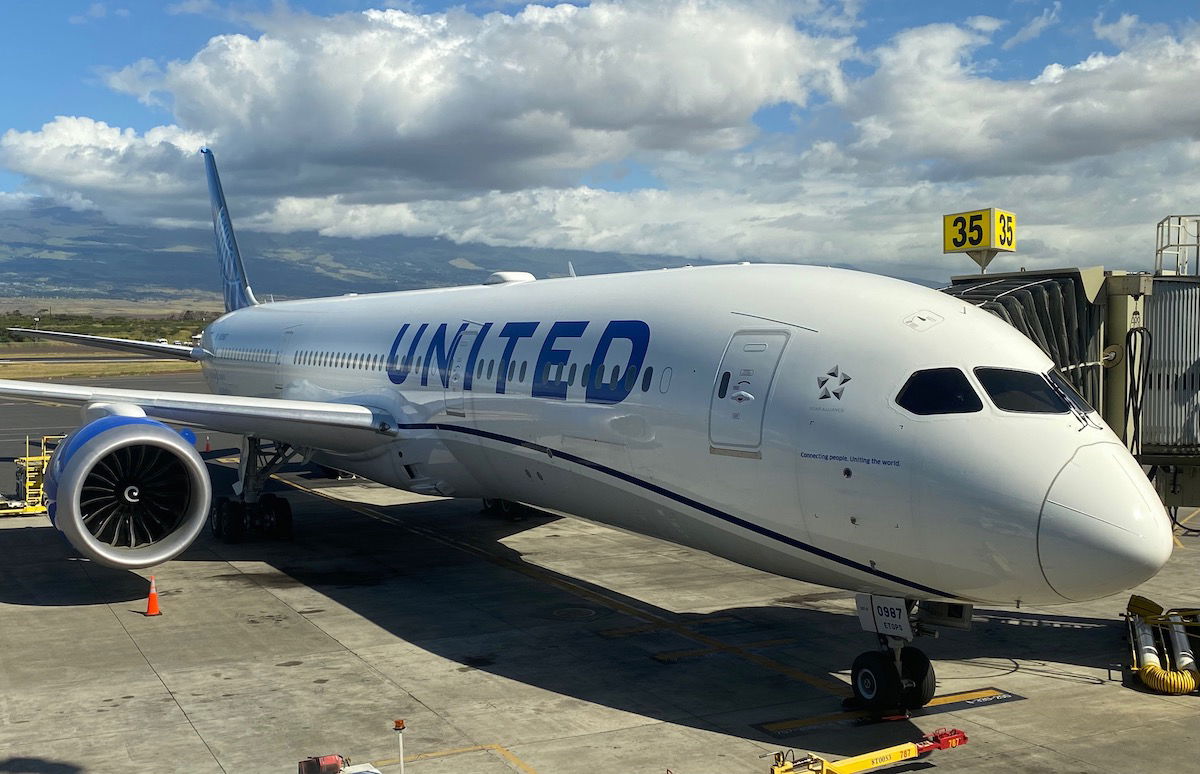
If there are more than 15 windows between the first and second set of doors on each side, it’s the 787-10.
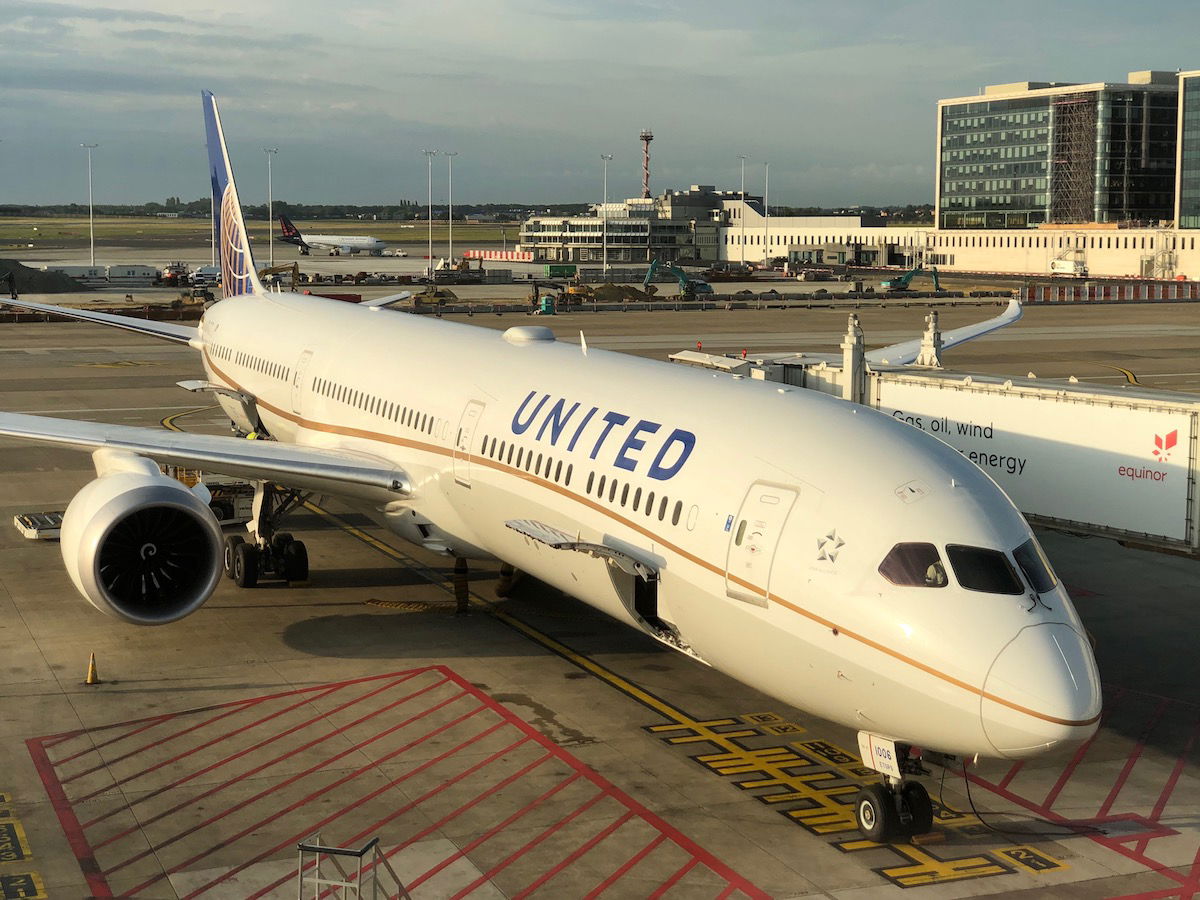
Airbus A220 characteristics (narrow body)
The Airbus A220 is one of the most pleasant narrow body aircraft to fly. This is a fairly small, sleek, and modern looking aircraft. I know this might sound silly, but to me, it looks like an Airbus A350 that shrunk.
There are a few easiest ways to tell this apart from other jets. For one, unlike the 737 and A320, the A220 has four cockpit windows, rather than six. You’ll also notice that the nose of the aircraft is straighter and longer, compared to the more rounded nose of the A320.

The plane also has distinctive winglets, at least among narrow body planes. The winglets exclusively go up, and are pretty straight. They’re not as curved or vertical as on the A320.
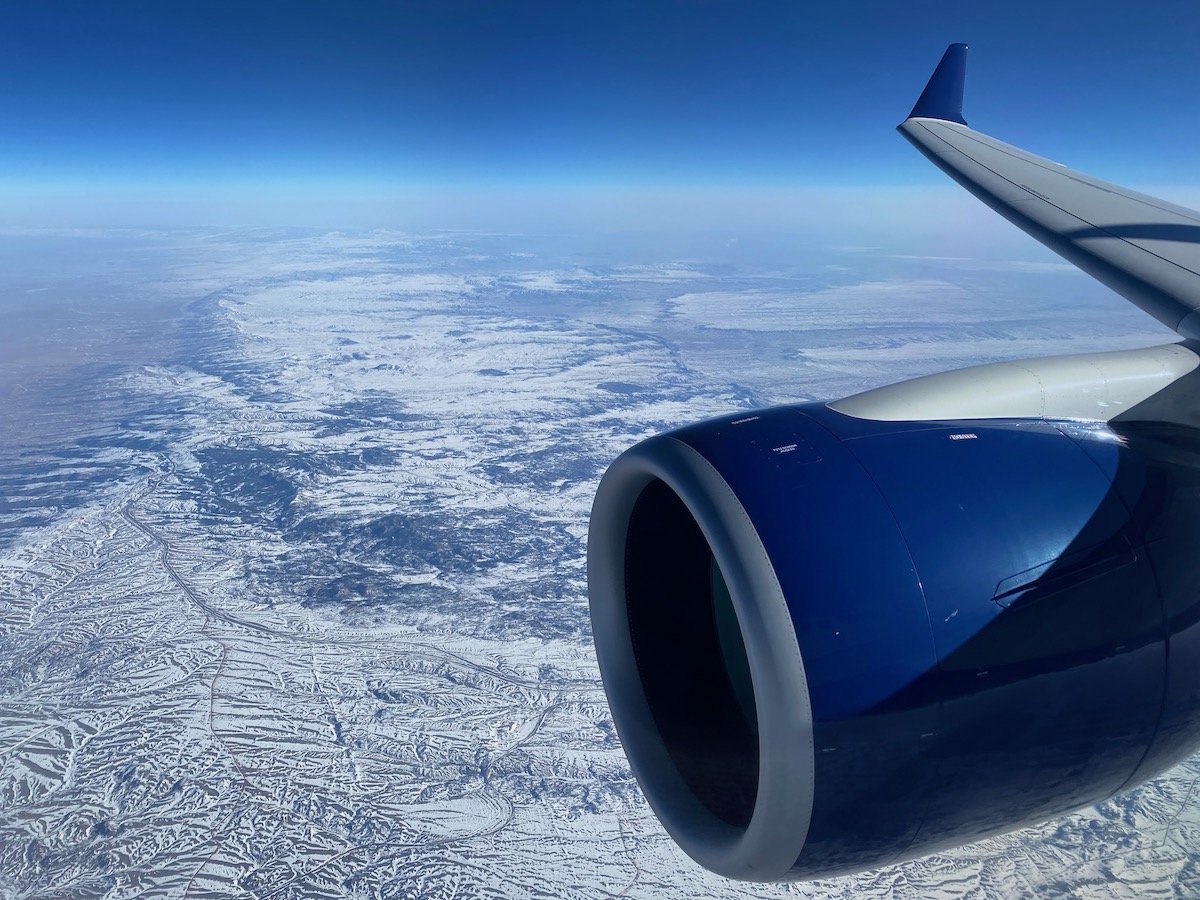
There are two variants of the A220 — the A220-100 and A220-300. If you ask me, the easiest way to tell them apart is by how many windows there are between the forward door and the emergency exit over the wing. The A220-100 has roughly 12 windows on each side in this area, while the A220-300 has roughly 17 windows on each side in this area. You can also usually just eyeball it — the A220-300 looks a lot more stretched.
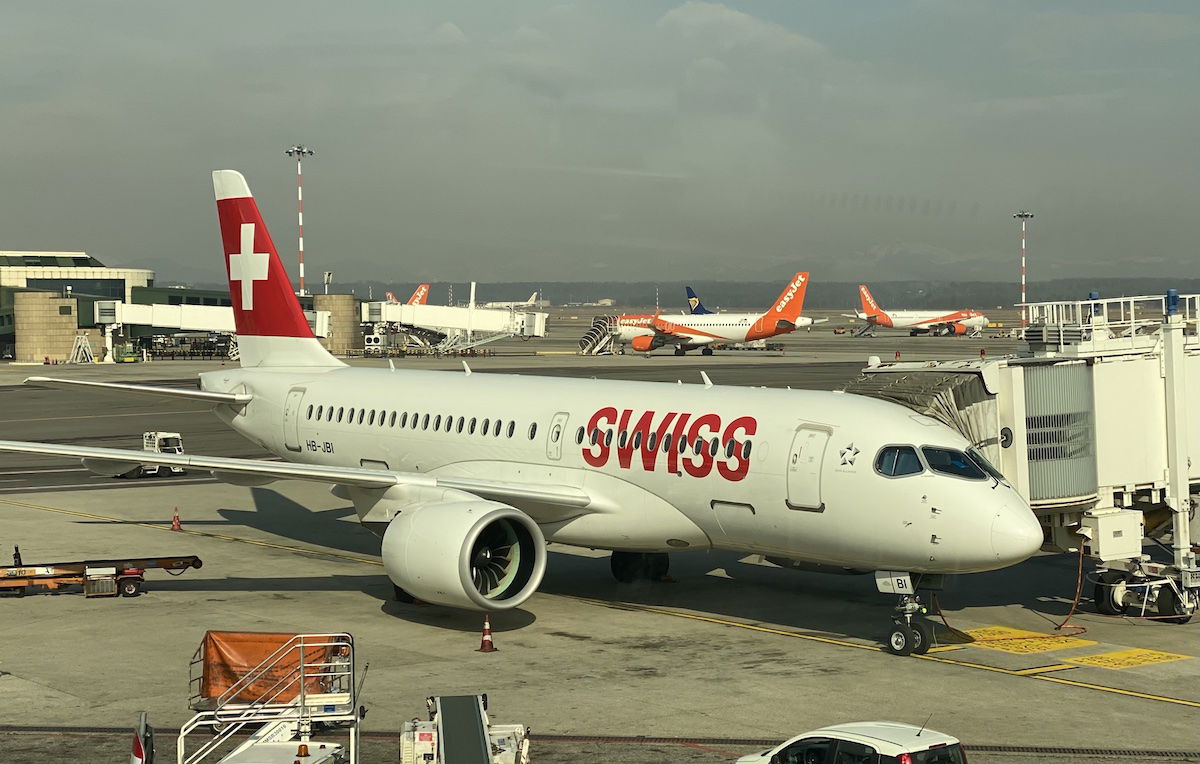
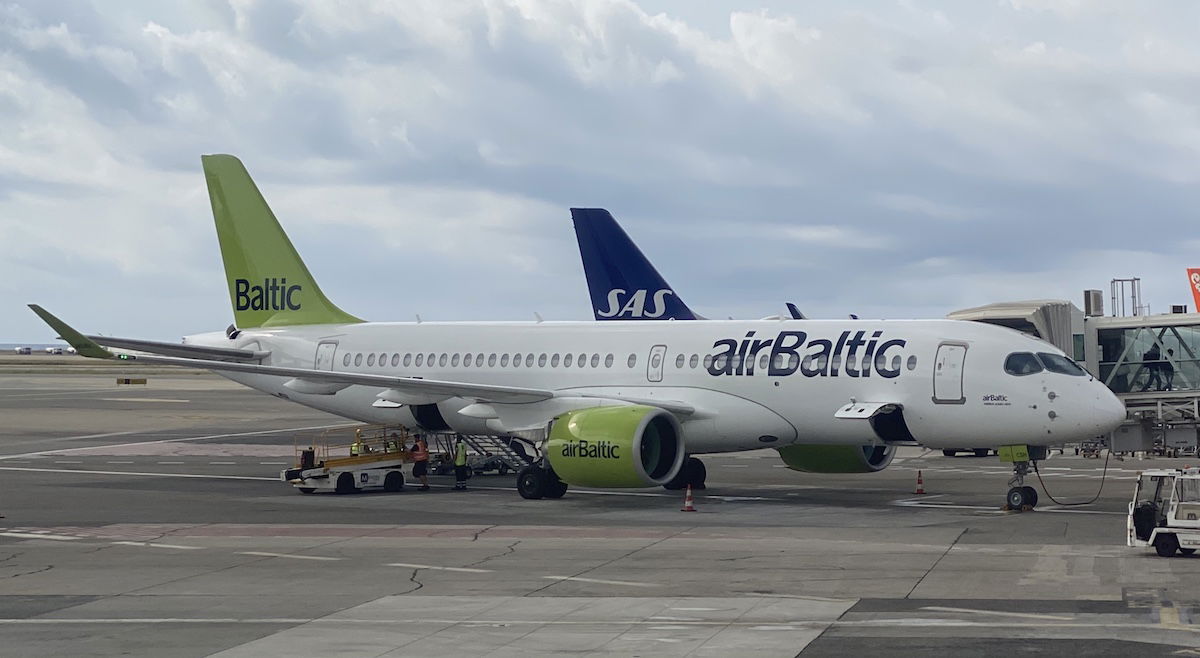
Airbus A320 characteristics (narrow body)
Much like with the 737, there are lots of A320 variants. There’s the A320ceo (the older version of the jet) and the A320neo (the more modern version of the jet, with “neo” standing for “new engine option”). Then you also have several variants, including the A319, A320, and A321.
Let’s start with the difference between the A320ceo and A320neo, which largely comes down to the engines, as you might have guessed based on the “neo” name. Not only does the A320neo have bigger engines than the A320ceo, but the A320neo also has extensions at the rear of the engine at the top and bottom. In simple words, you’ll notice how the engine looks more “open” in the back, unlike on the A320ceo, where it looks like it “closes” more.
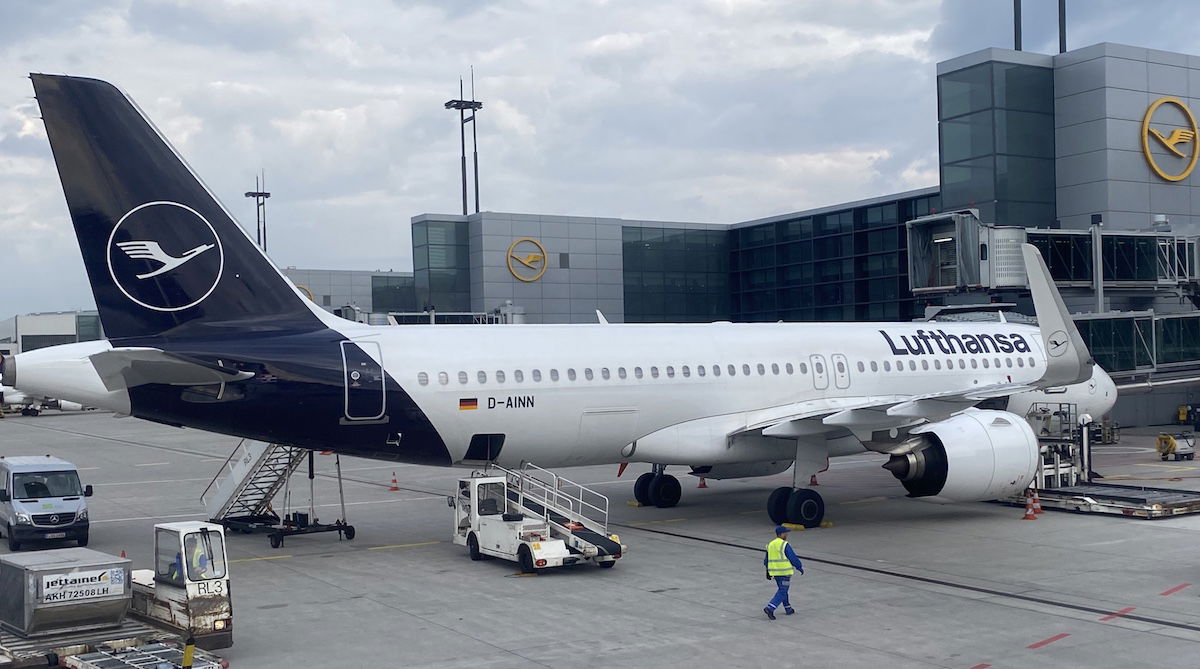
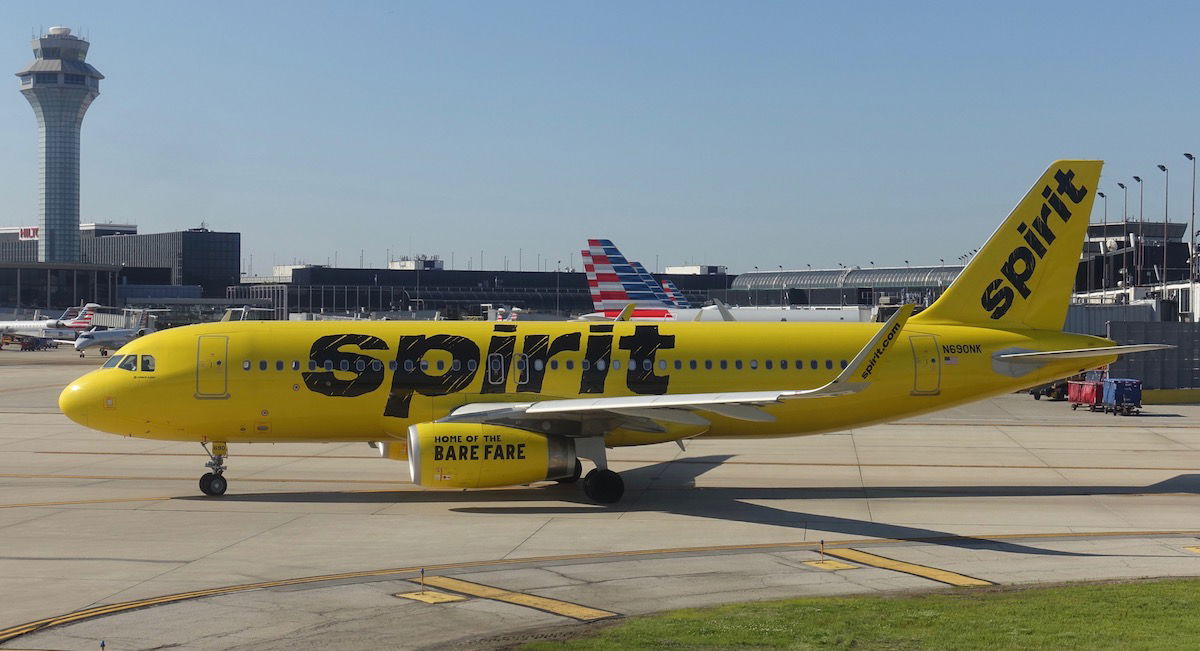
Now let’s talk about how to tell the variants apart. The A319 is smaller than the A320 and A321, and an easy identifier is that it typically has only one exit over the wing on each side.
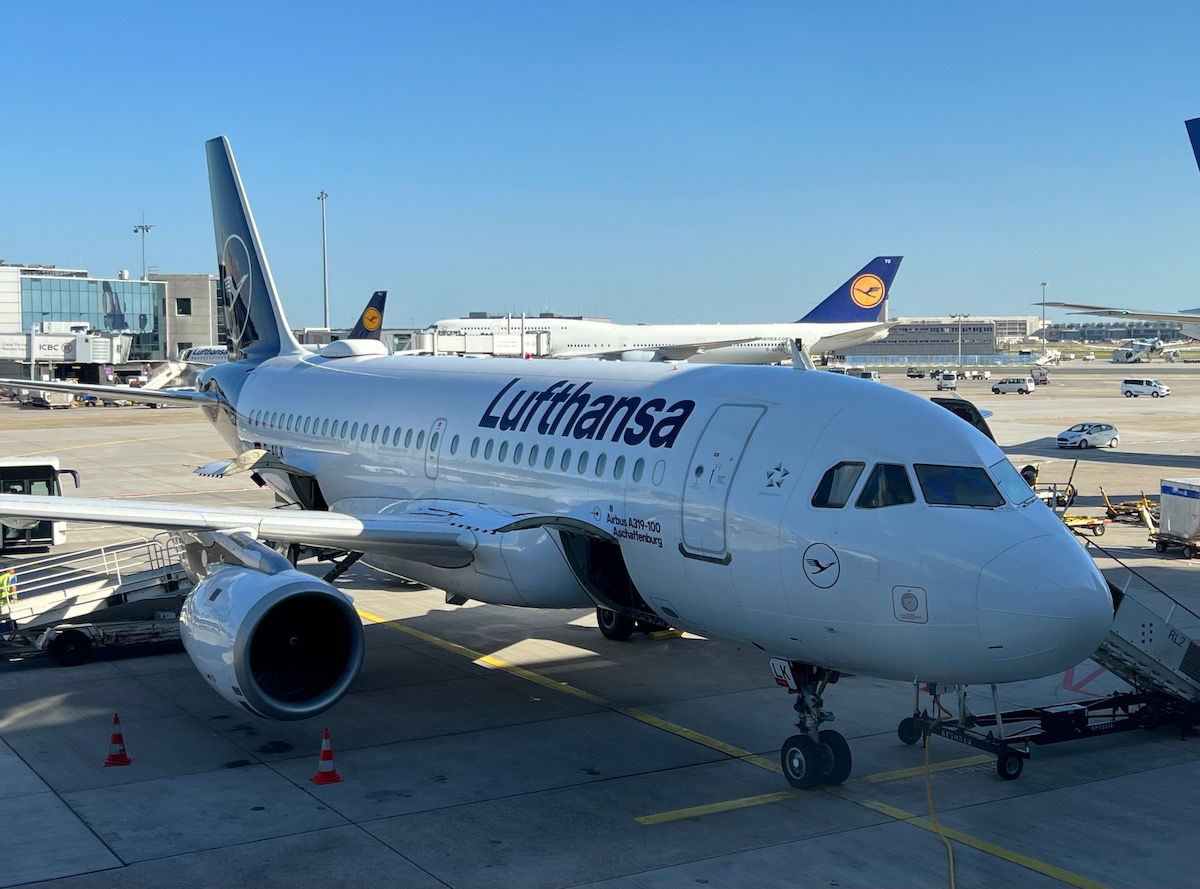
Meanwhile the A320ceo and A320neo have two exits on each side over the wing, but no other exits between the forward and rear doors.
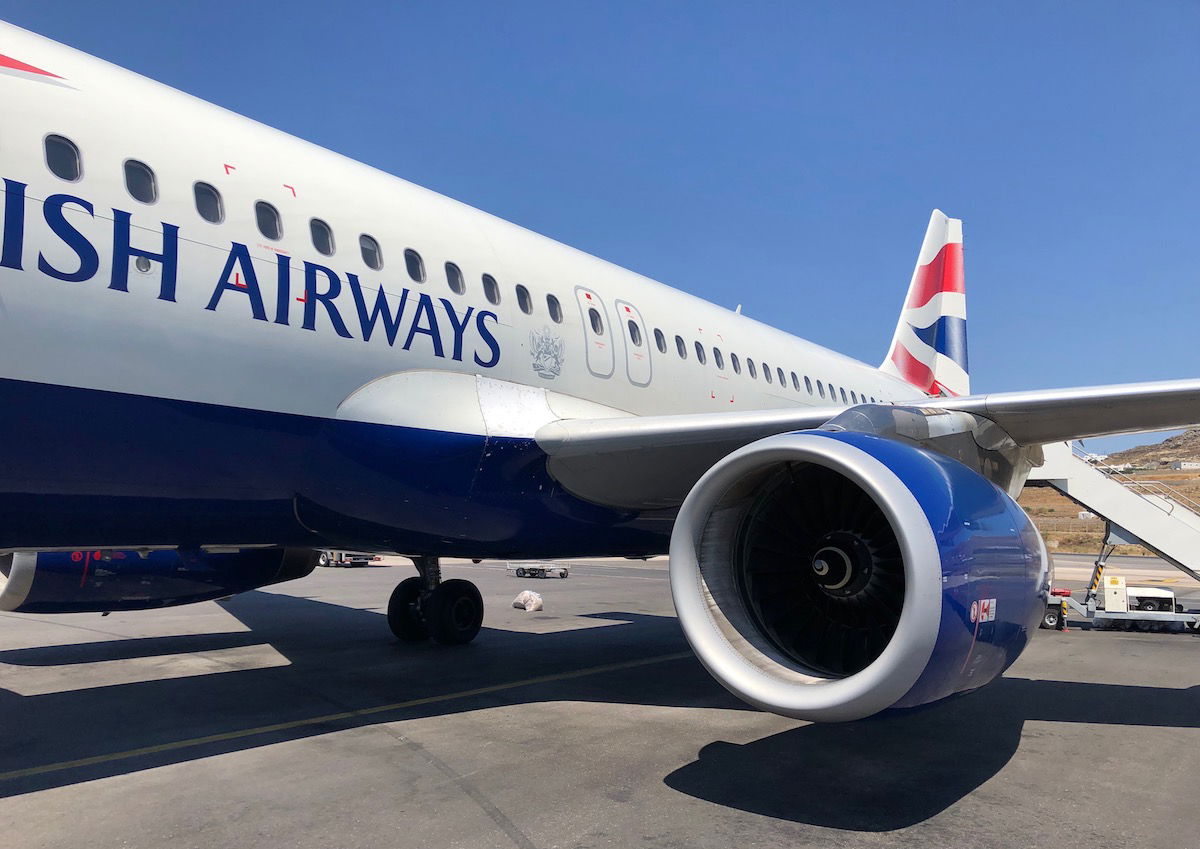
Lastly, the A321ceo and A321neo are the largest variants of the jet, and just generally look stretched. These planes have an extra set of exits, beyond the forward and rear doors, plus the two exits on each side over the wing. So you’ll either notice an extra door, or some weird window spacing toward the back of the plane.
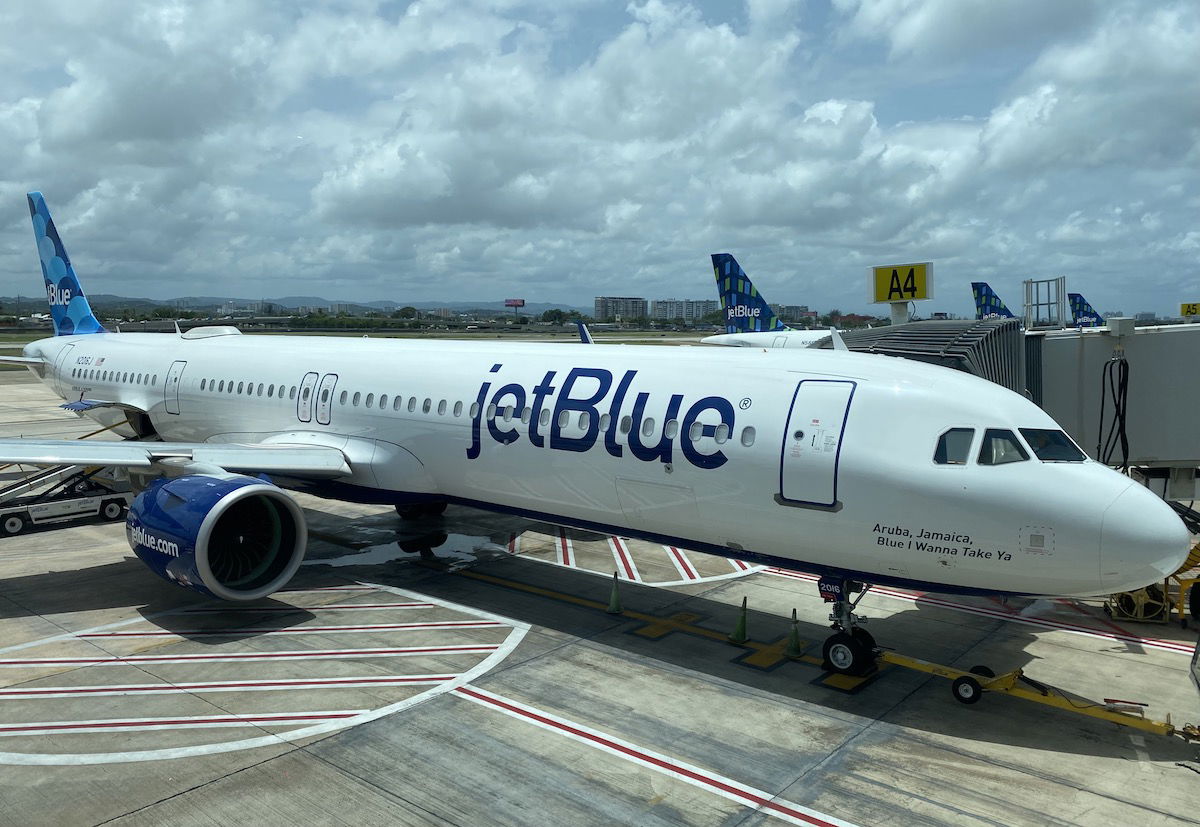
Airbus A330 characteristics (wide body)
The major challenge with identifying the A330 is that there are two very different types of these planes — there’s the A330-200/300, which is the original version of the plane, and then there’s the A330-800/900neo, which is the new version of the plane. To some people, the A330-900neo may look more like an A350-900 than an A330-300.
Let’s start with the A330-200/300. This plane is pretty “proportional” looking, and can easily be identified by the fact that it has two engines and the most “traditional” winglets out there. The winglets are an easy way to differentiate it from the other twin-engine wide bodies out there. Furthermore, the plane has four doors on each side.
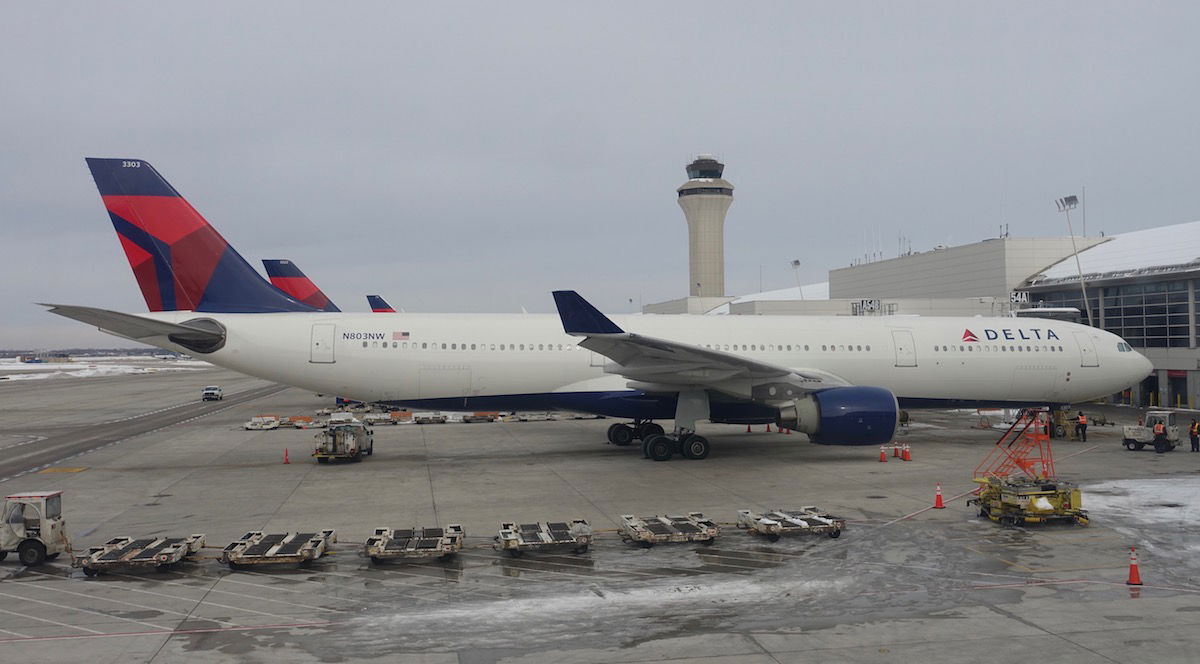
The A330-800/900neo has a similar body style, except the winglets are different. While the A330-200/300 winglets are wide and point almost straight up, the A330-800/900neo winglets get narrower, and curve a bit more.
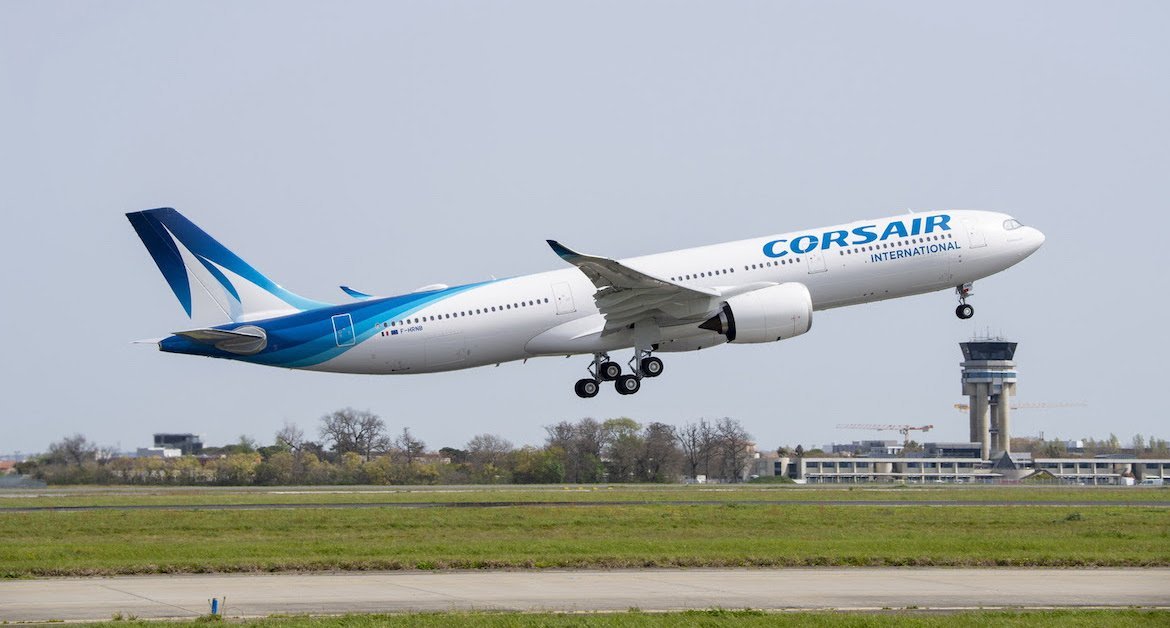
The A330neo and A350 have similar general designs, though there is a big difference in the wingtips, as you’ll see below when I cover the A350. If anyone has any other easy ways to spot the difference between the two planes, please let me know.
Airbus A340 characteristics (wide body)
The A340 is a single deck plane with four engines, which makes it pretty easy to identify, since it’s the only non-double decker that has four engines. But how do you tell the difference between the A340-200/300 and A340-600? Okay, truth be told there aren’t a lot of these planes flying anymore, so there aren’t many situations where you’ll have to do that. But still…
The A340-200/300 has engines that looks disproportionately small (like, are these things gonna propel us through the sky at 500 miles per hour, or dry my hair?), and also has just four doors on each side of the aircraft.
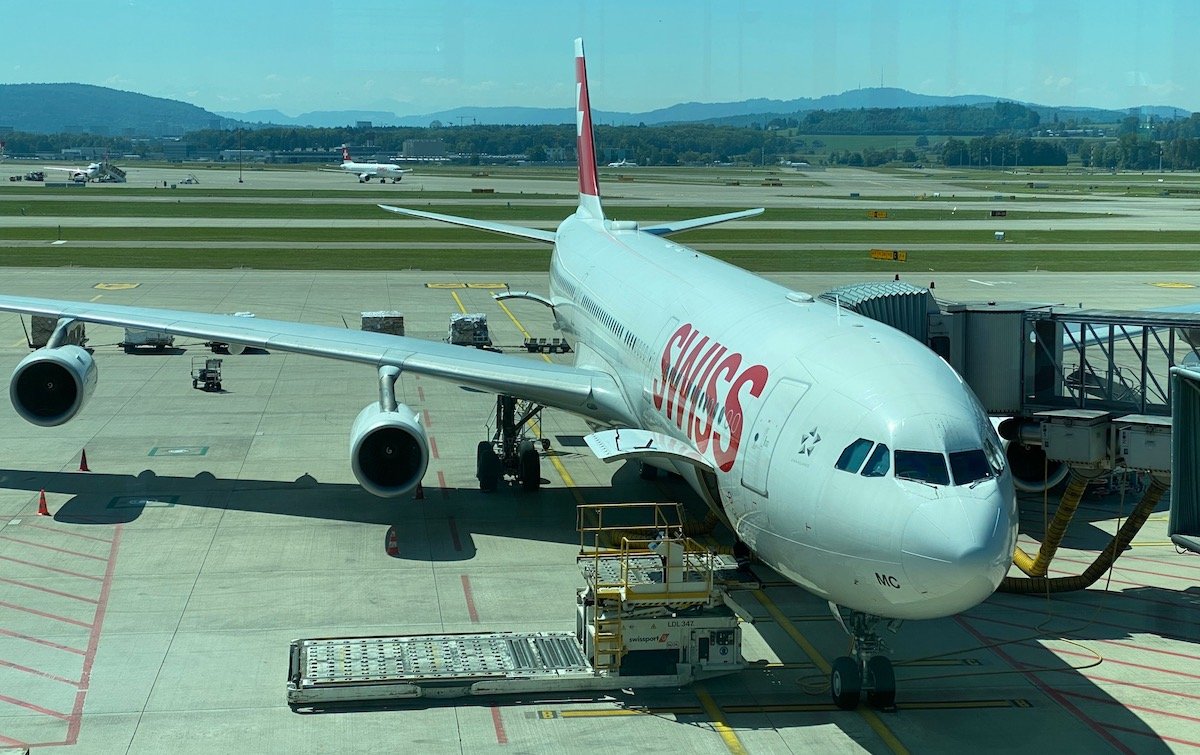
Meanwhile the A340-600 is a gorgeous, beastly work of art. It’s so long, so skinny, and has appropriately sized-looking engines. There are also five doors on each side of the aircraft. Personally after the 747, I find the A340-600 to be the most beautiful plane.
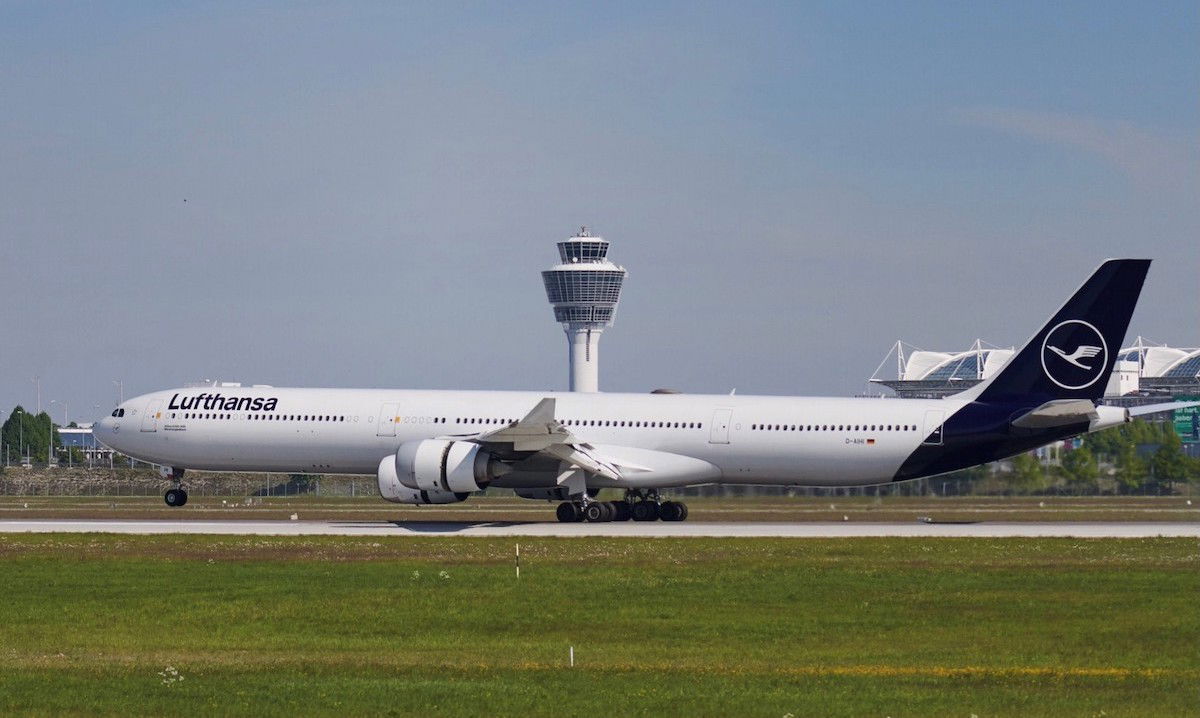
Airbus A350 characteristics (wide body)
The Airbus A350 has two main identifying characteristics — an extremely sleek design (especially near the nose, and with the Batman-looking cockpit windows), and very “steep” winglets (they’re not gradual, unlike the 787).
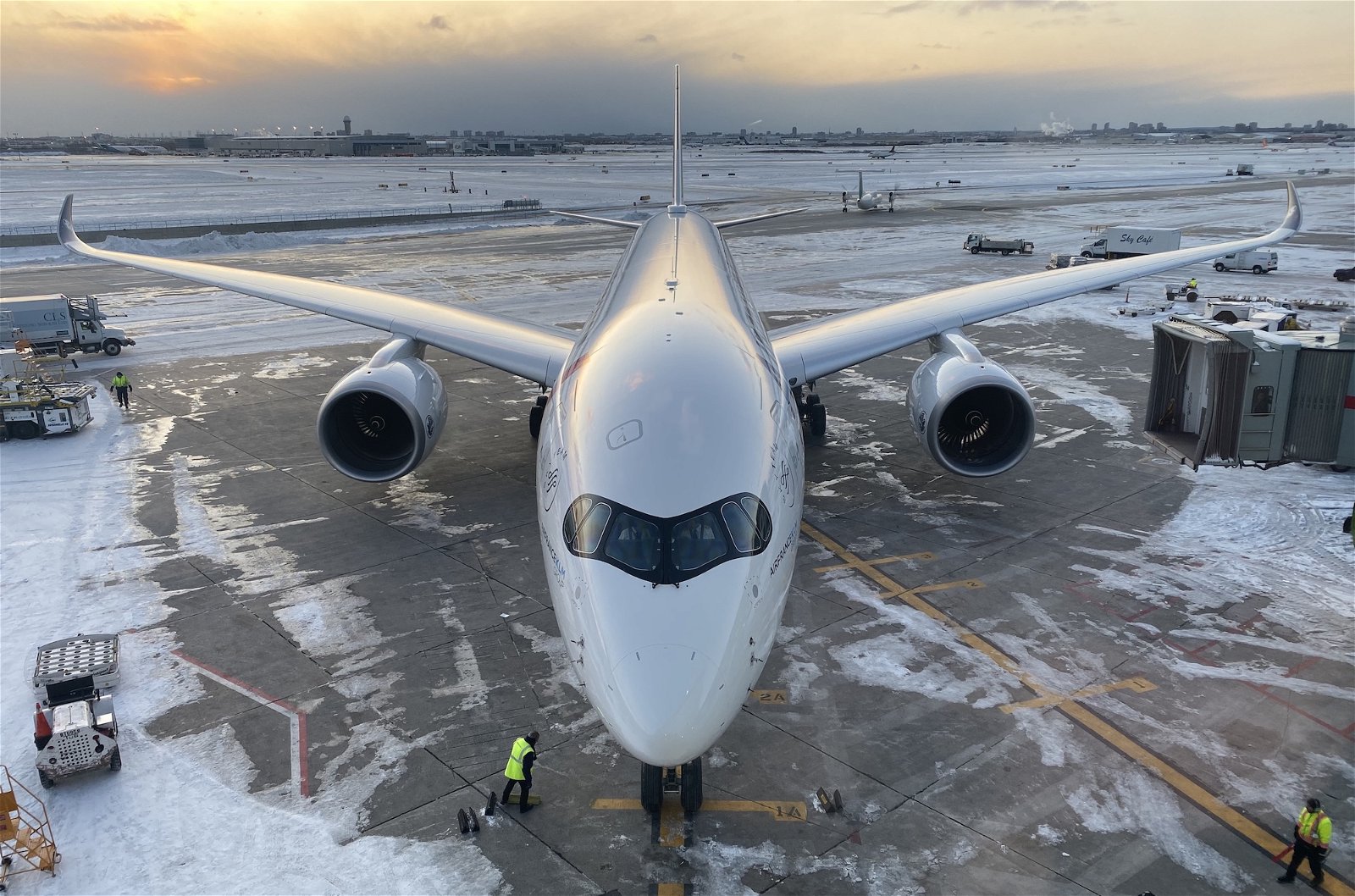
How do you tell the difference between the A350-900 and A350-1000? There are too many differences.
For one, the A350-900 has 10 wheels, while the A350-1000 has 14 wheels. The difference comes from the base of each wing having six wheels (three rows of two) rather than four wheels (two rows of two).
That’s because the A350-1000 is the stretched version of the A350-900. The easiest other way to tell the difference is based on the number of windows between doors one and two. The A350-900 has somewhere around 15 windows on each side between the first two sets of doors.
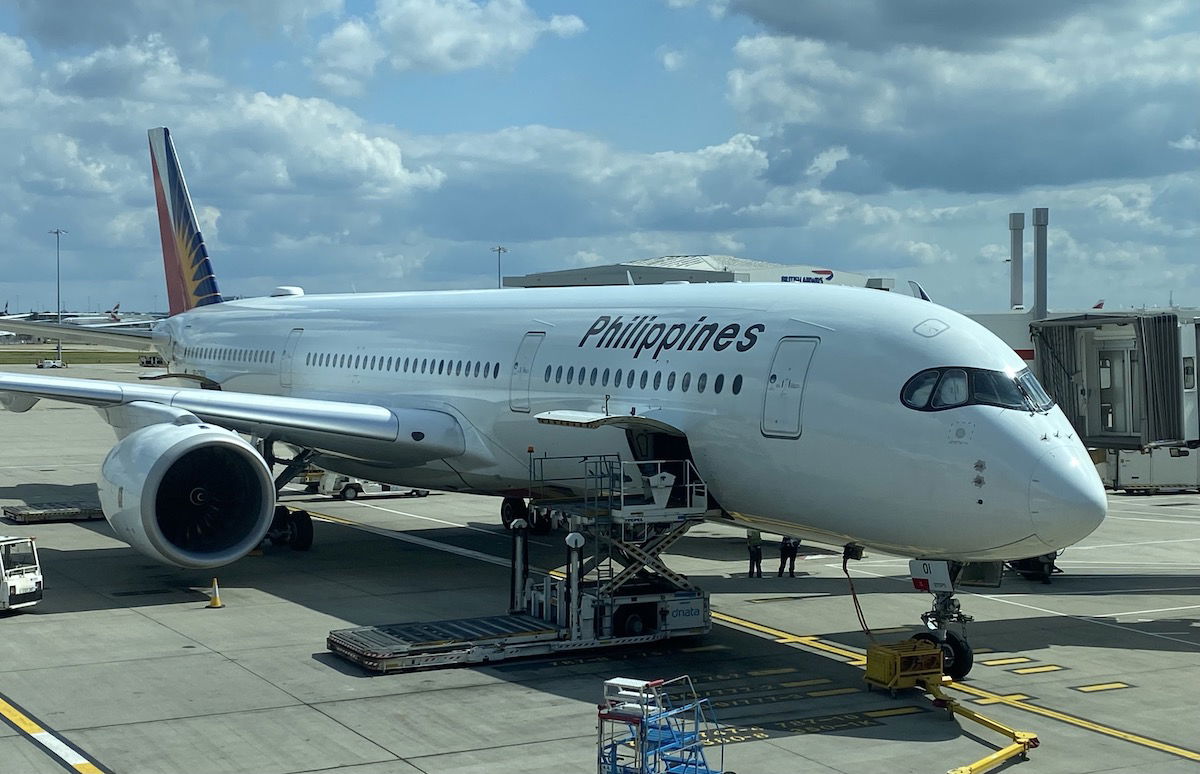
Meanwhile the A350-1000 has over 20 windows on each side between the first and second set of doors.

Airbus A380 characteristics (wide body)
I don’t think anyone has trouble identifying this whale-jet, given that it has two full decks.
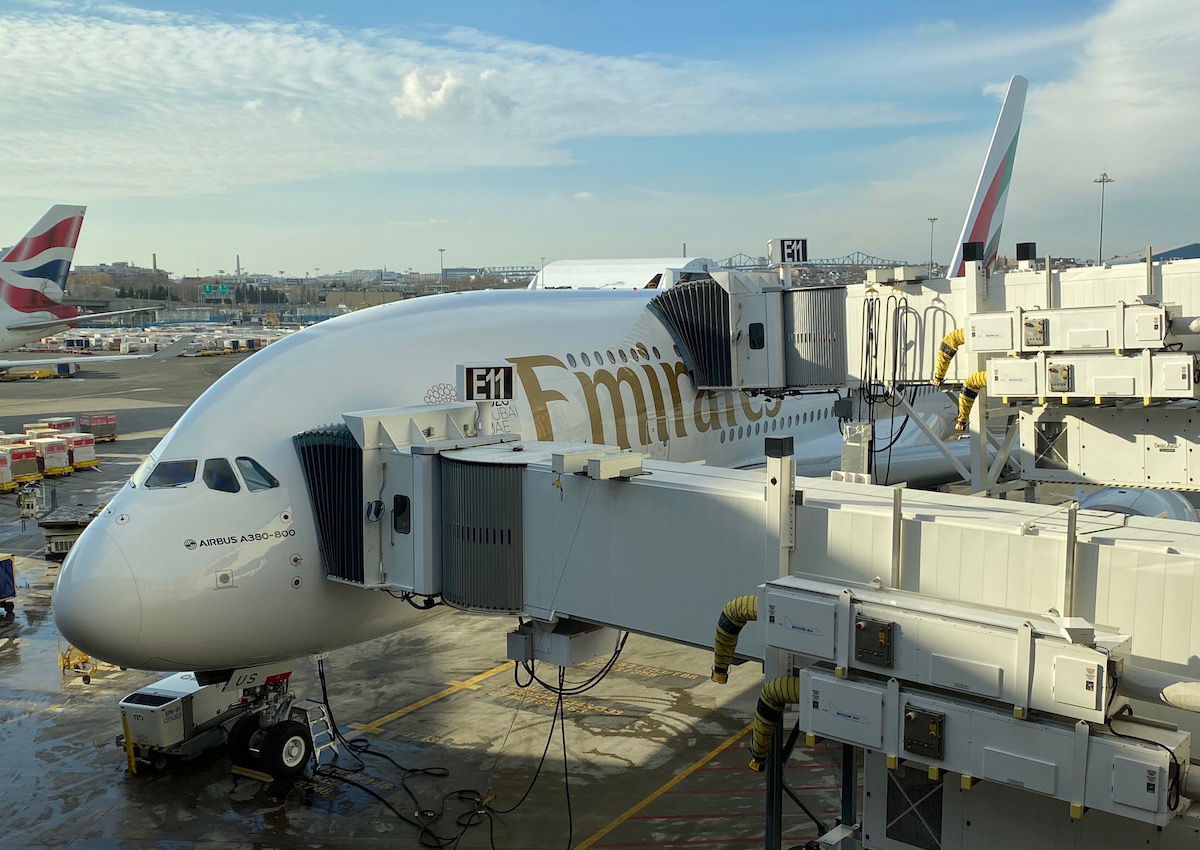
Bottom line
Understandably not everyone can spot the difference between airplanes, because, well, to most people it doesn’t actually matter. That being said, for us avgeeks it’s often a favorite pastime. Hopefully the above is a simple guide that can help people tell apart planes, should they be interested in learning a bit more.
While there are lots of other differences, I figure it makes sense to highlight some of the most “obvious” tricks, as opposed to studying each plane in great detail.
To fellow avgeeks, I’d be curious to hear how you easily tell planes apart!





If I am at all confused about which plane is which, I generally just look at the card in the seat back pocket... ;^)
Thanks for this article.my 8yr old son really loves planes and he was able to confirm most of the differences you called out in the article. He did say that you did not mention anything about the 777X.
Look for the plane with one wing hanging onto the tarmac.
No love for the 757? Such a fun plane to fly in, so much power
What about the 757?
What about the FEDEX and UPS MD-11s ? Lol
I personally love the Airbus A350-900 and Boeing 777-300ER.
I thought you had three options on that additional exit on the MAX 9. You could have an exit, you could have the cutout for an exit, but have it plugged, or you could choose not to have the cutout at all. I assumed that airlines that opted for the plugged exit did so for a potential higher resale value.
“…There are two many differences.”
I think you meant ”main.”
One of the ways to tell the differences is when one flies enough, one sort of gets an idea of which airlines fly which fleets and aircraft types.
@ TravelinWilly -- Fixed, thanks!
Most Delta pilots can't differentiate the different types of planes. Lucky has more qualifications than Delta pilots.
The 737 MAX also has a normal tail cone, unlike earlier 737s. I find that useful.
I once dated a guy who sent me a photo of a BA A350 and told me how excited he was about flying on the Dreamliner again. We had to end things.
More because he turned out to be unfaithful, but anyway, very sore subject
If we’re being honest, mistaking an A350 for a 787 was a huge red flag.